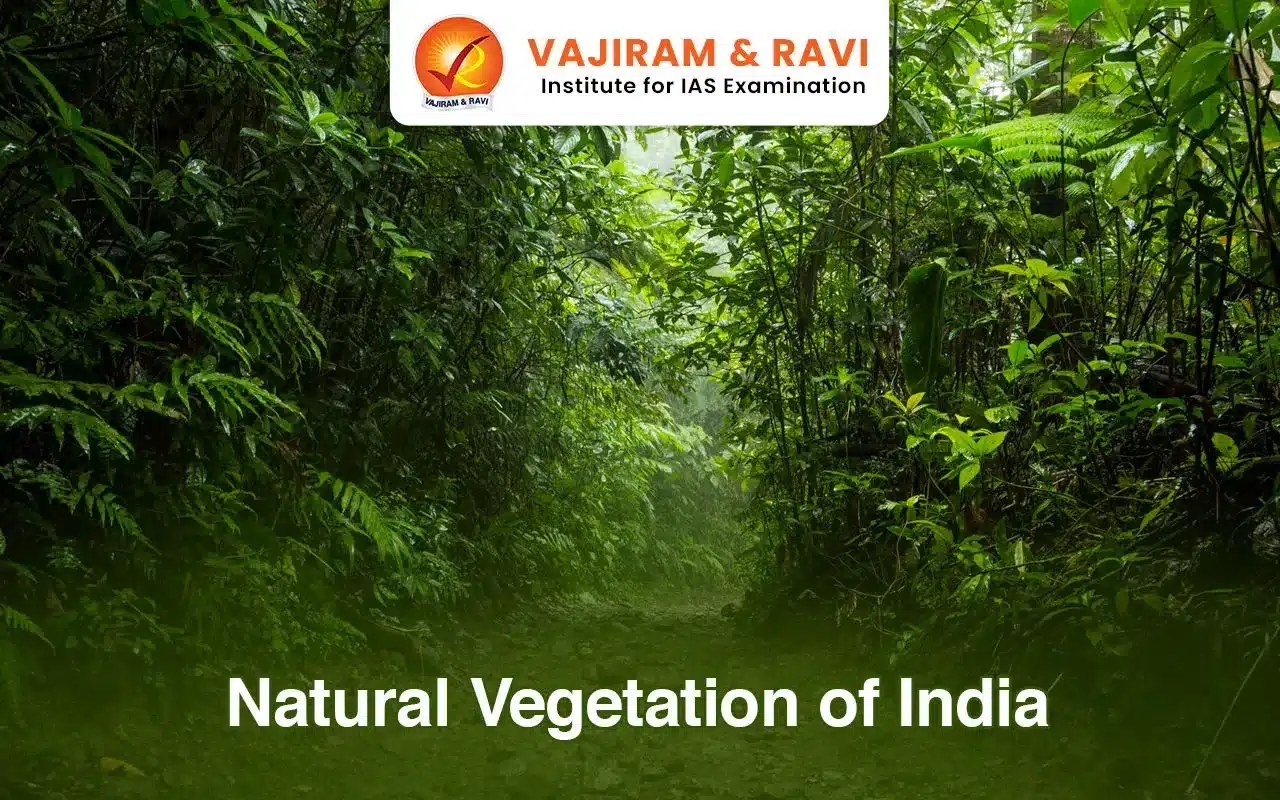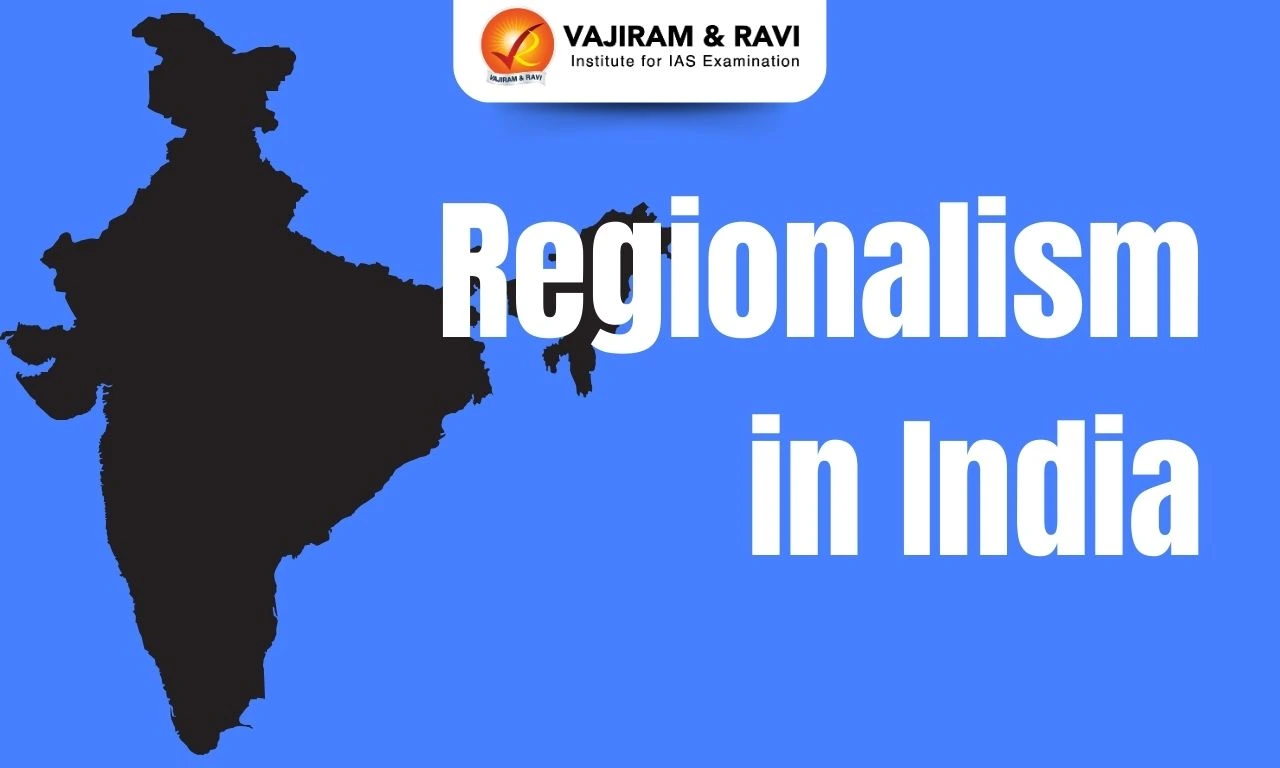Natural vegetation refers to the plant community that has evolved without human intervention. It includes various plant species co-existing in a specific environment. India’s diverse climate, from the Himalayan alpine to tropical rainforests, supports a rich variety of natural vegetation, including rainforests, deciduous forests, desert vegetation, mangroves, and alpine vegetation. These ecosystems contribute to India’s biodiversity and significantly impact its climate and economy.
Climatic factors like temperature, precipitation, humidity, and edaphic factors such as soil composition and topography determine the vegetation of a region. India, one of the world’s 12 mega biodiversity countries, houses 6% of the world’s flowering plant species, ranking tenth globally and fourth in Asia.
Major Vegetation Types in India
India’s diverse climatic conditions and geographical features have given rise to various types of natural vegetation. The major vegetation types in India can be classified as follows:
Tropical Evergreen and Semi-Evergreen forests
Tropical Evergreen and Semi-evergreen Vegetation are found in regions with high rainfall and humidity.
| Tropical Evergreen Forests | Semi-Evergreen Forests |
| – Location: Found in the western slope of the Western Ghats, hills of the northeastern region, and the Andaman and Nicobar Islands.
– Climate:
– Characteristics:
– Species: Rosewood, mahogany, aini, ebony, etc. |
– Locations: Found in the less rainy parts of the same regions like the Western Ghats, Andaman and Nicobar Islands, and the Eastern Himalayas.
– Climate:
– Characteristics:
– Main Species: White cedar, hollock, and kail. |
Tropical Deciduous Vegetation
These are the most widespread vegetation types in India.
| Tropical Moist Deciduous Forests | Tropical Dry Deciduous Forests |
– Location:
– Rainfall Range: Typically between 100-200 cm. – Characteristics:
|
– Location: These are mainly found in rainier areas of the Peninsula and the plains of Uttar Pradesh and Bihar.
– Rainfall Range: Typically between 70-100 cm. – Characteristics:
– Common Trees: Tendu, palas, amaltas, bel, khair, axlewood. – Note: Vegetation cover in the western and southern parts of Rajasthan is scanty due to low rainfall and overgrazing.
|
Tropical Thorn Forests
- These forests are found in areas with less than 50 cm of rainfall. A mix of grasses and shrubs characterises them.
- Locations: These are found in semi-arid regions of southwest Punjab, Haryana, Rajasthan, Gujarat, Madhya Pradesh, and Uttar Pradesh.
- Most plants in these forests remain leafless for a significant part of the year, creating a scrub-like appearance.
- Key species include babool, ber, wild date palm, khair, neem, khejri, and palas.
- The undergrowth features tussocky grass reaching up to 2 meters in height.
Littoral and Swamp Forests
Littoral and Swamp forests, known as wetland forests, are abundant in India. These forests play a crucial role in maintaining the ecological balance and are an integral part of India’s natural vegetation.
| Wetland Habitats in India | Mangrove Forests |
| – Area Under Paddy Cultivation: Approximately 70% of wetland areas.
– Protected Sites:
– India’s wetlands can be categorised into eight types:
|
– Location:
– Characteristics:
– Extent in India: Covers approximately 4992 sq. km (2.5% of the world’s mangrove forests). |
Montane Forests
Mountain forests can be classified into two types, the northern mountain forests and the southern mountain forests.
| Northern Mountain Forests | Southern Mountain Forests |
| – These forests span the Himalayan mountain ranges and exhibit a gradual change in vegetation as altitude increases.
– Deciduous forests are found in the foothills of the Himalayas. – Between altitudes of 1,000 to 2,000 meters, we find wet temperate forests. – In the higher hills of northeastern India, hilly areas of West Bengal, and Uttarakhand, evergreen broadleaf trees like oak and chestnut dominate. – Pine forests are well-developed around 1,500 to 1,750 meters – The Deodar, a durable wood used in construction, grows in the western Himalayas. – Blue pine and spruce appear at 2,225 to 3,048 meters.
– At higher elevations, we encounter silver firs, junipers, pines, birch, and rhododendrons. – Mosses and lichens characterise the tundra vegetation at extreme altitudes. |
– These forests are found in three distinct regions of Peninsular India: the Western Ghats, the Vindhyas, and the Nilgiris.
– Due to their proximity to the tropics and elevation of around 1,500 meters, vegetation varies:
|
Factors Influencing Natural Vegetation Diversity in India
India’s diverse vegetation is shaped by a variety of geographical, climatic, and environmental influences, resulting in a unique array of plant life across its regions. These factors contribute significantly to India’s biodiversity.
- Climatic Factors: India exhibits a wide range of climatic conditions, from tropical to temperate and alpine, which contribute to the diversity of vegetation.
- Rainfall: Monsoon and its distribution are the main factors for the vegetation diversity in India.
- Areas with high and well-distributed rainfall, such as the Western Ghats and the northeastern states, support dense and diverse tropical evergreen forests.
- In contrast, regions with low rainfall and rain-shadow zones, like the Thar Desert in Rajasthan, have sparse and drought-resistant vegetation.
- Temperature: Temperature gradients affect vegetation growth.
- For example, in the Himalayas, decreasing temperature attitudinally alters vegetation from tropical to alpine.
- Humidity: Humidity levels affect the water balance in plants and influence their growth and distribution.
- Areas with high humidity support the growth of epiphytic plants (plants that grow on other plants), while arid regions with low humidity have vegetation adapted to water scarcity.
- Rainfall: Monsoon and its distribution are the main factors for the vegetation diversity in India.
- Topographical Factors: India’s diverse topography creates microclimates that contribute to the diversity in vegetation.
- Altitude and slope also determine the vegetation type.
- The southern slopes of the Himalayas have denser vegetation due to higher precipitation compared to the drier north-facing slopes.
- The rain shadow region, or leeward side, has distinct vegetation due to less rainfall.
- For example, Western Ghats have dense forests on the windward side, but sparse, dry forests on the leeward side.
- Soil Factors: The diversity of soil types, including their texture, structure, depth, and nutrient content, plays a significant role in shaping the natural vegetation of India.
- Soil Texture: Sandy soils with good drainage support different vegetation types compared to clayey soils with poor drainage.
- For example, tropical thorn forests are often found in areas with sandy and shallow soils, while tropical evergreen forests thrive in areas with deep, well-drained soils.
- Soil Fertility: Nutrient-rich soils support dense vegetation growth, while nutrient-poor soils may lead to stunted or specialised vegetation adapted to such conditions.
- The fertile alluvial soils of the Indo-Gangetic plains support dense and diverse vegetation, while the nutrient-poor soils of the Deccan Plateau contribute to the growth of thorny and drought-resistant vegetation.
- Soil Texture: Sandy soils with good drainage support different vegetation types compared to clayey soils with poor drainage.
- Anthropogenic factors: Human activities, both past and present, have played a role in shaping the diversity of natural vegetation in India.
- The diversity of vegetation has been shaped by cultural practices, agriculture (like Jhum cultivation), and plantation farming.
- Human activities like deforestation, urbanisation, and agricultural expansion have altered land use, leading to habitat fragmentation and degradation, thus affecting vegetation diversity.
Natural Vegetation to India Importance
Natural vegetation plays a vital role in maintaining ecological balance, supporting biodiversity, and providing various ecosystem services. Some of the key importance are:
- Habitat for Wildlife: Natural vegetation provides food, shelter, and breeding grounds for a wide range of endemic flora and fauna, supporting biodiversity conservation.
- The Sundarbans mangrove forest in West Bengal is a prime example. It’s home to the Royal Bengal Tiger and numerous other species, showcasing the rich biodiversity supported by natural vegetation.
- Climate regulation: Forests and other vegetation types help regulate the climate by absorbing carbon dioxide, releasing oxygen, and influencing local and regional rainfall patterns.
- The Western Ghats and the Himalayan forests play a crucial role in sequestering carbon dioxide and releasing oxygen, thereby helping in climate regulation.
- Soil conservation: Vegetation cover helps prevent soil erosion by anchoring the soil with its root systems and reducing the impact of wind and water erosion.
- The grasslands of the Gangetic plains help in soil conservation by preventing erosion during monsoons.
- Water regulation: Forests and wetlands play a crucial role in regulating water cycles, groundwater recharge, and preventing floods and droughts.
- The wetlands of Loktak Lake in Manipur and the forests around the Brahmaputra river basin play a vital role in water regulation, aiding in groundwater recharge and flood control.
- Economic resources: Natural vegetation provides various resources such as timber, fuel, food, and medicinal plants, which are essential for local communities and industries.
- The forests in Madhya Pradesh and Chhattisgarh provide timber, the tea gardens in Assam provide tea leaves, and the medicinal plants from the forests of Kerala contribute to Ayurveda.
- Cultural and Recreational value: Many natural vegetation areas hold cultural and spiritual significance, and they also serve as recreational spaces for eco-tourism and outdoor activities.
- The sacred groves in many parts of India, like Meghalaya, have great cultural and spiritual significance.
- National parks and wildlife sanctuaries, like the Jim Corbett National Park, are popular spots for eco-tourism and outdoor activities.
Natural Vegetation of India UPSC PYQs
Question 1: “Identify and discuss the factors responsible for the diversity of Natural Vegetation in India. Assess the significance of wildlife sanctuaries in rainforest regions of India.” (UPSC Mains 2023)
Last updated on April, 2025
→ UPSC Notification 2025 was released on 22nd January 2025.
→ The UPSC Vacancy 2025 were released 1129, out of which 979 were for UPSC CSE and remaining 150 are for UPSC IFoS.
→ UPSC Admit Card 2025 is expected to release in first week of May for CSE Prelims Exam 2025.
→ The UPSC Prelims 2025 is scheduled to be conducted on 25th May 2025 and UPSC Mains 2025 will be conducted on 22nd August 2025.
→ Apply once through it and aspirants can apply for various government exams conducted by UPSC.
→ The UPSC Selection Process is of 3 stages-Prelims, Mains and Interview.
→ UPSC Result 2024 is released with latest UPSC Marksheet 2024. Check Now!
→ UPSC Toppers List 2024 is released now. Shakti Dubey is UPSC AIR 1 2024 Topper.
→ Also check Best IAS Coaching in Delhi
Natural Vegetation of India FAQs
Q1. What are the major vegetation types found in India?+
Q2. What is the distribution of tropical evergreen forests in India?+
Q3. Where are tropical deciduous forests found in India?+
Q4. What are the characteristic features of tropical thorn forests?+
Q5. What is the significance of mangrove forests in India?+
















